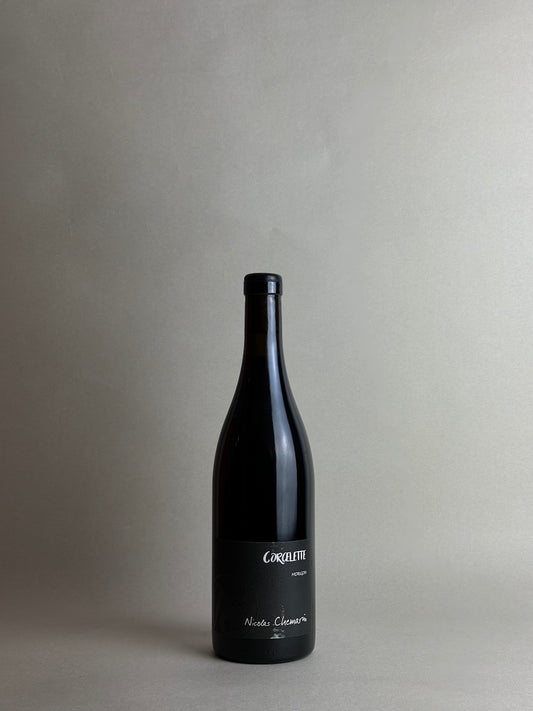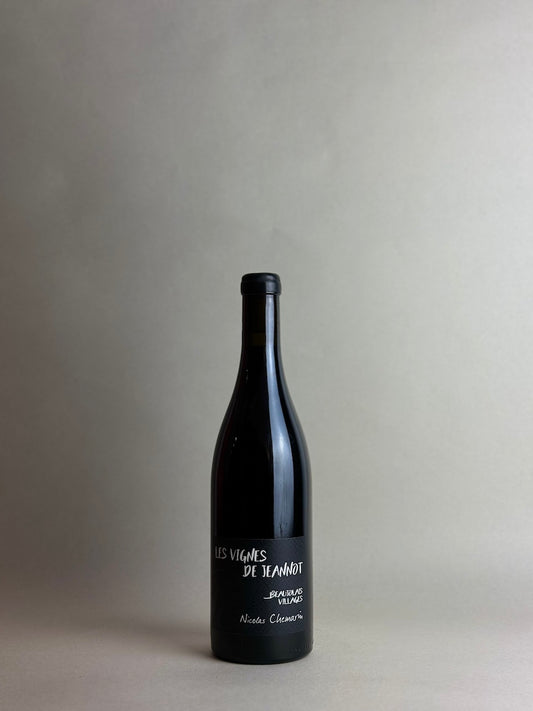
Nicolas Chemarin
-
 Sold out
Sold outNicolas Chemarin - Saburin 2022
Regular price 104,00 lei RONRegular price -
Nicolas Chemarin - Ptit Grobis Blanc 2022
Regular price 99,00 lei RONRegular price -
Nicolas Chemarin - Ptiti Grobis Rouge 2022
Regular price 99,00 lei RONRegular price -
 Sold out
Sold outNicolas Chemarin - Corcelette 2018
Regular price 167,00 lei RONRegular price -
Nicolas Chemarin - Le Haut Ronze 2021
Regular price 135,00 lei RONRegular price -
Nicolas Chemarin - Les Vignes de Jeannot 2018
Regular price 135,00 lei RONRegular price
Collection: Nicolas Chemarin
Nicolas Chemarin is an example of the awakening in Beaujolais. This has not escaped La Revue du Vin de France in its current guide "Les Meilleurs Vins de France": "This young winemaker did not wait long to demonstrate all his talent." After completing his oenology studies, Nicolas worked at the organic winery Château des Rontets in Chaintré and was responsible for vinification at Louis Tête for two years. In 2008 he finally founded his own winery in his home village of Marchampt on the basis of three hectares of family-owned vineyards.
Marchampt is located in the very south of the Beaujolais at an altitude of 450 metres. The vineyards rise steeply behind his old stone house, which his grandfather built, and their slope resembles that of Côte Rôtie. The microclimate is cool up here, the soil is rich in grey and blue granite and has only a few centimetres of topsoil, so yields never naturally exceed 35 hectolitres per hectare. Here, too, as on the northern Rhône, granite characterises the style of the wines. Nicolas Chemarin emphasises that it took him a few years to understand this terroir. You have to be very restrained in the vinification, extract very carefully during the mash fermentation, otherwise the wines will be too strong. With a gradient of 35 to 55%, it almost goes without saying that working these vineyards with a tractor is almost impossible.
In the cellar, Nicolas works as gently as possible. The old stone house, built directly on and partly into the slope, offers the best conditions for working with gravity and it cools at the same time. Nicolas uses the old concrete cuves for mash fermentation. He prefers to work with so-called "vendage entières", i.e. with the whole grapes. Fermentation takes place at low temperatures "semi-carbonique", i.e. partly in the classic Beaujolais process, which Nicolas interrupts by means of a few pigages, the careful submersion of the cap. It is, so to speak, a stylistic link between the Beaujolais style and that of classic Burgundy. The aim is to bring out the juicy fruit of the Gamay grape while preserving the finesse of the respective terroir.






